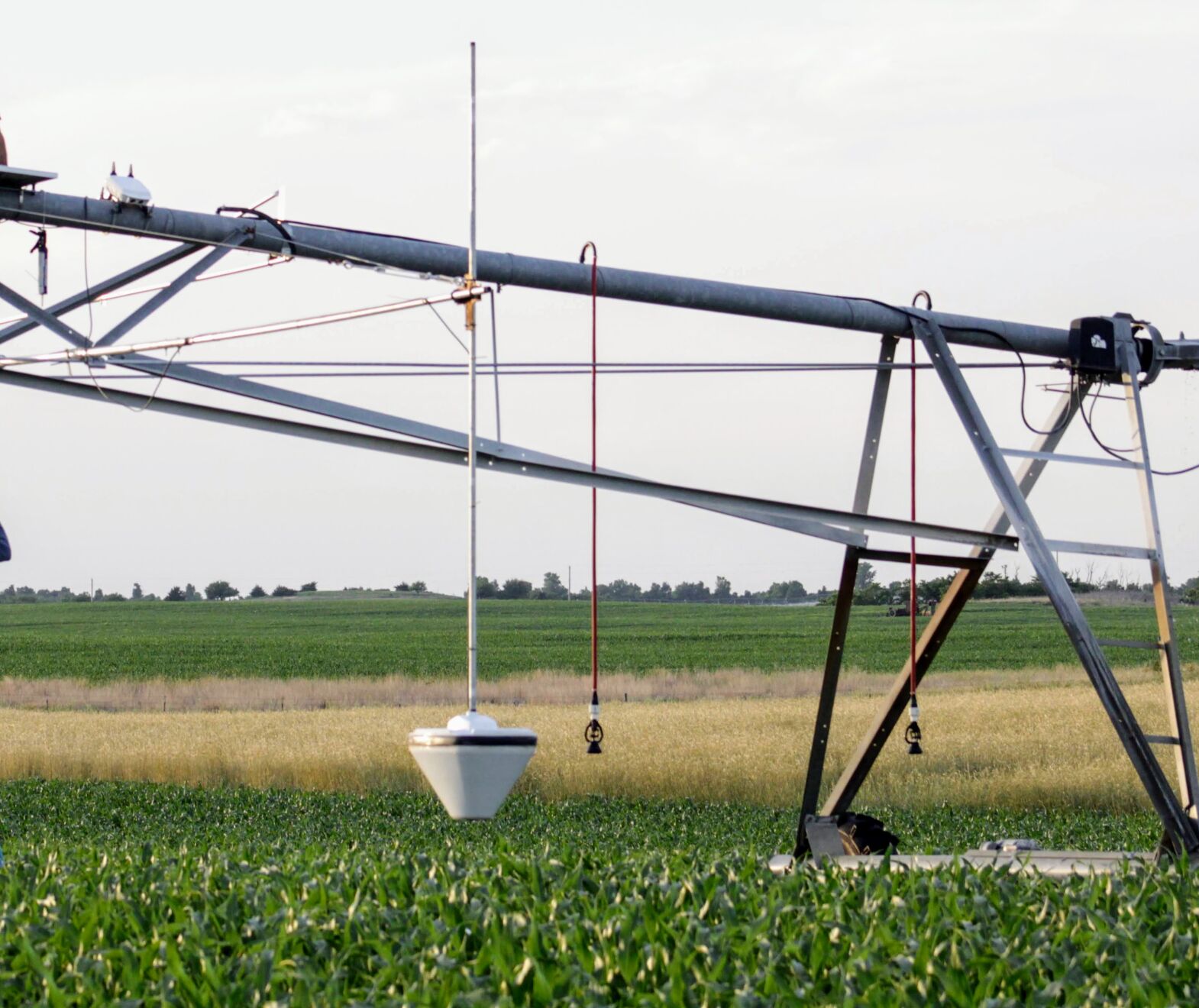Water is arguably the most valuable commodity among the many that farmers need to consistently raise a productive, profitable crop. It’s also becoming one of the most inconsistent to predict and preserve.
These realities have motivated fifth-generation farmer Gary Harshberger to better understand, adopt and evolve progressive water management strategies—including use of Autonomous Pivot technology—to optimize moisture across the family’s 25,000-acre operation in southwest Kansas.
“One of the reasons we’ve invested in technology and Autonomous Pivot is to acquire more and better data about what’s happening in our fields so we can make wiser decisions about water application and timing to be more efficient,” Harshberger says.
Water slide
The farm has been drawing water from the Ogallala Aquifer since the 1960s, and today has 6,000 acres of primarily corn and soybeans under center pivot irrigation. But decades of reliance on the aquifer dramatically diminished or depleted supplies that the Harshbergers have always depended on.
“When I was a kid, my dad, George, told me that when I got to be his age, the wells we used then for irrigation probably wouldn’t have any water. Fortunately, we’ve adopted practices to help prevent that,” Harshberger says. “So that when my children returned to the operation, we ensured that they would have a water supply they can depend on for decades to come.”
Today, wells that pumped 1,200 to 1,500 gallons per minute of water for irrigation are, in some cases, down to 600 to 700 gallons per minute, according to Harshberger. Despite the dwindling water supply, the farm has been able to maintain and even increase crop production by maximizing every drop of available moisture.
Farming primarily silt loam soils in semi-arid conditions, the operation utilizes a variety of conservation tillage techniques, including no-till and vertical tillage to enhance water infiltration. But Harshberger cites adoption of precision farming practices including soil moisture probes and variable-rate irrigation as voluntary steps taken to extend the life of the Ogallala Aquifer as a lasting resource not only on their farm, but for others in the region.
“In areas of our farm, we’ve seen no decline and, in some cases, improvement in the water levels over the past four years by as much as an inch per year,” he says.
Pivoting into precision
In 2021, Harshberger invested in five Autonomous Pivot systems with the primary goal of collecting more real-time data from his center pivots. The robotic, artificial intelligence-enhanced tools utilize ground-penetrating radar and RGB cameras to collect soil moisture and crop health data.
With an irrigation footprint spread out over 20 miles, Harshberger strategically placed the systems in both corn and soybean fields as well as in locations with sandier soils and different water application rates.
“I wanted the systems in fields where we had deeper wells and also shallower wells, so we could compare,” Harshberger says. “Every gallon we apply, I want to be able to show we’re maximizing our conversion of water to economic output. We noticed right away from the ground-penetrating radar, which detects water infiltration down two feet, that we were getting water deeper into that root zone.”
While he hasn’t crunched the numbers on specific economic return on investment from the Autonomous Pivot systems, Harshberger has anecdotal evidence the technology is proving its worth after one year.
One benefit he shared was the ability to turn off center pivots equipped with the Autonomous Pivot systems more frequently than those without, because of the 360-degree data collected throughout the irrigation circles. While each center pivot has a soil moisture probe, those tools don’t capture the same scope of information.
“The Autonomous Pivot systems are collecting data as they move through the field, which is important for us because we typically have strong southwest dry air flows and humidity that can ravage western and southern areas of our irrigated fields,” Harshberger says. “Now we’re getting more comprehensive data to make real-time decisions on whether to slow down or speed up rates in those areas and avoid over- or under-applying water and can also use the system’s weather station feature to forecast future application needs.”
In the past, he would often err on the side of caution and continuously run pivots rather than risk a field not having enough water. Harshberger has also found that it’s sometimes more efficient and economical to irrigate following a rain, even though the logic goes against conventional wisdom.
“It’s cooler and the evaporation transfer rate is far less than on those 100-degree days. When we’re working with limited water, then that’s our time to build moisture capacity in the soil,” he says. “We’ve got a more holistic vision of what’s going on with the data to make those kinds of decisions more confidently, even if they might seem unconventional.”
Automated future
As the Autonomous Pivot systems become more sophisticated, Harshberger intends to expand on his investment. In 2022, he plans to at least double the number of systems he has in the field and build on the first-year data.
While he’s using the systems simultaneously with soil moisture probes, Harshberger anticipates that, in the future, Autonomous Pivot technology can replace the probes as a more complete, cost-effective solution. Pest and plant disease detection, along with active nitrogen sensing are also forthcoming features that Harshberger sees as opportunities to advance his future vision for the family farm.
“I want to increase automation on our farm and continue collecting data that is going to improve our decision-making,” he says. “I believe Autonomous Pivot can be a big part of accomplishing that goal in the future, not just for water management.”

